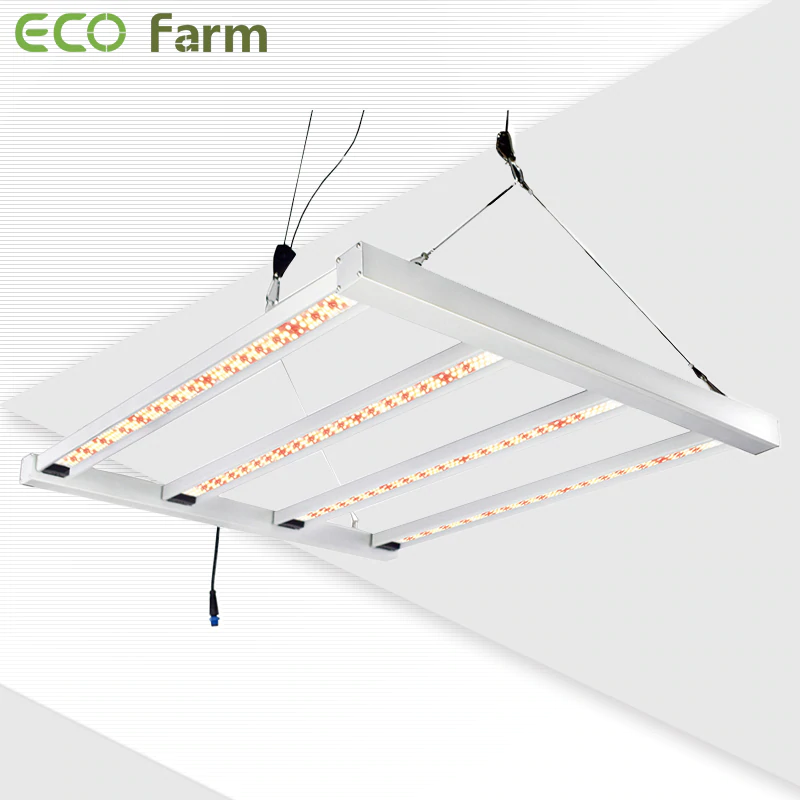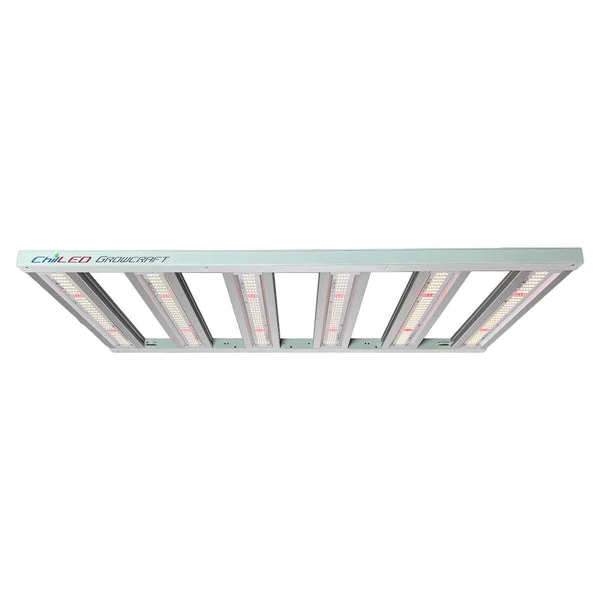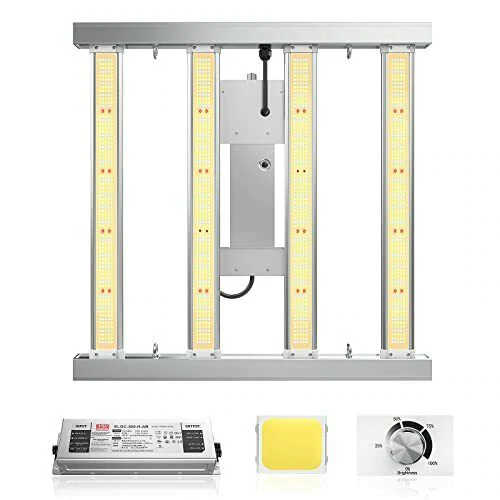- Home
- SHOP ECO FARM
-
TOP BRANDS
-
Grow Lights Brands
- Adjust-A-Wing
- Apollo Horticulture
- Bestva
- Black Dog LED
- California Lightworks
- ChilLED Grow Light
- Eco Farm
- HLG - Horticulture Lighting Group
- Kingled
- Kind LED
- Mars Hydro
- Morsen
- Neilo
- NextLight
- Phlizon
- PlatinumLed
- Roleadro
- Optic LED Grow Lights
- ViparSpectra
- Vivosun
- EYE Hortilux
- IPOWER
- NanoLux
- Phantom grow light
- Gavita grow lights
- Grower's Choice
- Lumatek
- Maxibright
- Yearld Pro
- ThinkGrow
- Crecer Lighting
- Green Sunshine Electric Sky
- fohse aries
- loriflux
- luxx
- fluence
- iluminar
- Lex
- LTC
- Rayonled
- FGI
- PHOTONTEK
- Grow Tents & Kits Brands
- Extraction & Harvest Brands
- Climate Control & Hydroponic Brands
-
Grow Lights Brands
- COMPANY INFO
- COOPERATE WITH US
- Blog
- Sign in
- Home
-
SHOP ECO FARM
- ECO Farm Grow Lights
- ECO Farm LED Grow Lights
- ECO Farm Quantum Board
- ECO Farm Samsung LED Grow Lights
- ECO Farm COB Grow Lights
- ECO Farm Commercial Lights
- ECO Farm Supplemental Grow Light
- ECO Farm Fluorescent grow lights
- ECO Farm HPS & MH Grow Lights
- ECO Farm CMH Grow Lights
- ECO Farm HID/CMH Bulbs & Ballasts
- ECO Farm Grow Tents & Kits
- ECO Farm 2x2ft Grow Kits
- ECO Farm 3x3ft Grow Kits
- ECO Farm 3.3x3.3ft Grow Kits
- ECO Farm 4x4ft Grow Kits
- ECO Farm 5x5ft Grow Kits
- ECO Farm Grow Tent - Standard Style
- ECO Farm Grow Tent - Extension & Roof & Lodge Style
- ECO Farm Extraction & Harvest
- ECO Farm Rosin Press Machine
- ECO Farm Dry & Wet Trimmers
- ECO Farm Oil Accessories
- ECO Farm Medicinal Plants Grinder
- ECO Farm Medicinal Plants Containers
- ECO Farm Medicinal Plants Dryer
- ECO Farm Refrigeration Dryer
- ECO Farm Climate Control & Other Accessories
- ECO Farm Inline Duct Fans
- ECO Farm Oscillating Fans
- ECO Farm Exhaust Fans
- ECO Farm Air Filter
- ECO Farm Duct Muffler
- ECO Farm Ventilation Kits
- ECO Farm Plant Humidifiers
- ECO Farm Plant Dehumidifiers
- ECO Farm Hydroponic Accessories
- ECO Farm Other Accessories
- ECO Farm Hydroponics Microscopes
-
TOP BRANDS
- Grow Lights Brands
- Adjust-A-Wing
- Apollo Horticulture
- Bestva
- Black Dog LED
- California Lightworks
- ChilLED Grow Light
- Eco Farm
- HLG - Horticulture Lighting Group
- Kingled
- Kind LED
- Mars Hydro
- Morsen
- Neilo
- NextLight
- Phlizon
- PlatinumLed
- Roleadro
- Optic LED Grow Lights
- ViparSpectra
- Vivosun
- EYE Hortilux
- IPOWER
- NanoLux
- Phantom grow light
- Gavita grow lights
- Grower's Choice
- Lumatek
- Maxibright
- Yearld Pro
- ThinkGrow
- Crecer Lighting
- Green Sunshine Electric Sky
- fohse aries
- loriflux
- luxx
- fluence
- iluminar
- Lex
- LTC
- Rayonled
- FGI
- PHOTONTEK
- Grow Tents & Kits Brands
- Apollo Horticulture
- Black Box
- CoolGrows
- Eco Farm
- GrowLab
- Gorilla Grow Tents
- Mars Hydro
- Quictent
- Secret Jardin
- Unit Farm
- TopoGrow
- VIVOSUN
- Topolite
-
COMPANY INFO
-
COOPERATE WITH US
- Blog
Best 300W Full Spectrum LED Grow Lights for Plants [2022 Updated]
April 19, 2022
Growing plants in a confined space requires proper lighting. For this, you can opt for 300W LED grow lights offering efficiency and a good amount of brightness. Let’s take a look at some of the best 300W LED grow lights out there and what to expect from each of them.
How can I tell if my plants need more light?
If your plants thrive during the spring and summer, but struggle the rest of the year, it may be time to bring supplemental light to your living space. Adding a few hours of light in wintertime can reinvigorate houseplants and sustain overwintering outdoor pots until the next growing season. It can also help certain plants flower and make fruit.
Since stressed plants develop problems, here are some signs your plants need more light:
Dying or yellowing leaves.
Smaller than normal leaves.
New pests and diseases.
Tall and leggy growth.
Variegated plants losing variegation.
herbal grow jars on kitchen counter
Indoor herbs like these culinary grow kits need bright or supplemental light to flourish.
To address any of the following problems, do an inventory of your plants and find out how much direct and indirect sunlight they need each day. Use a sunlight calculator or app to find out if your space provides enough light for optimal growth. If not, it’s time to consider grow lights.
How Long Should a 300W Grow Light Be Left On?
As a general rule of thumb, most vegetables and flowering plants need 12 to 16 hours of light per day, with flowering plants at the top end of that range.
Plan on giving most plants at least 8 hours of darkness per day.
But remember that different types of plants may need different amounts of light.
Darkness is actually very important for the plant growth cycle. During the day, sunlight helps plants produce energy through photosynthesis. At night, however, plants break this energy down for growth and flowering in a process called “respiration”.
Check your seed packaging or plant tags, or ask at the nursery for specific suggestions. And make sure you turn your grow lights off every once in a while. No one likes to work 24 hours a day — even plants!
ECO Farm DBL3000 Full Spectrum LED Grow Light 320W

Features:
This ECO Farm LED grow light has a unique designed 4-LED bars provide more even canopy coverage, especially to the outer edges cultivation areas. With 864 pcs SAMSUNG LM281B diodes, DBL3000 Led grow lights draw 320 watts achieving an impressive PPE of 2.5 umol/J, coverage for 3'x3′ of high-yielding full-cycle growth. Full-spectrum (3000K, 5000k, 660nmnm, 30nm) is perfect for veg to bloom, to adapt to each phase of the plant cycle. The dimming knob is ideal for growers to adjust the light intensity according to different growing stages. Bar light design and aluminium material on the back contribute to better airflow and great heat dissipation. This grow light comes with a detachable driver and long power cord, thereby reducing ambient heat in your growing space for extended lifespan. With the waterproof circuit board, worry free of the moist environment. Easy installation.
ChilLED Tech Growcraft X6 mini 330W LED Grow Light

Features:
The ChilLED LED Grow Light features six light bars that provide a footprint of up to 2 x 4. With a compact 1.375" design, it hangs easily in a variety of growing areas. This 6-strip commercial LED grow light is designed and manufactured in the USA with a choice of flowering or plant growth optimized lights to suit your needs. ChilLED LED grow lights can maximize your yield and profit. Switch from HPS to ChilLED and increase your yield and profits by over by 30–70% without adding any additional heat, energy costs or cooling requirements. Market-leading efficiency combined with our adjustable maximum yield spectrum equals unmatched performance. This grow light uses the highest build and component quality — never sacrificed for profit. ChilLED grow lights are built to last.
MAXSISUN MG3000 300W LED Grow Light

Features:
This MAXSISUN LED grow light uses top components with Samsung diodes and MeanWell driver with a bar light design. It is our most professional LED grow light that fits perfectly into a 3x3 ft space from seeds to harvest. The MG3000 consumes only 300 watts, offers a truly high efficacy rating of PPF per Joule 2.4 μmol/J, empowering plants with plentiful and evenly PAR distribution without hot spot. Keep the same distance between plants and the MG3000. Adjust its brightness for different growing stages. We provide a PAR map including brightness, hanging height, and power draw. A smooth rotary dimmer offers flexibility to reduce the amount of energy while reducing your electricity bill. It helps you master light levels from normal daylight to super bright.
How to Choose the Best LED Grow Lights
Desired Coverage Area
This is an important point you should pay attention to. Often people ask which is the best growing light? It depends. Much of the grow lights are not suitable to fit in the same grow space.
What’s the best hanging height? It depends on the stage of the plant growth you are at. First choose the system dimensions and then choose fixture dimensions and output.
Wattage per Square Meter (W/m2)
Typically for plants, we would suggest 300 to 400 Watts per square meter. Which are levels for hungry light plants. But of course, it will depend on the plant species you want to grow.
You can always dim the light to reach the ideal intensity, depending on your grow stage instead of adjusting canopy height distance. If your intentions are to increase light intensity to high levels of PPFD (ex: >1000 µmol/ms/s in flowering stage) you may have to enrich your grow system CO2 levels.
Light Spread & Uniformity
It is also important to consider when purchasing grow lights to ensure that photons are uniformed through all the entire canopies. There are companies that focus on the dead center of the grow canopy.
For example, 900 PPFD in the center but if you see on the edges the values have less PPFD, like 200. So, uniformity has an important role in your grow system to avoid uneven canopies.
Efficacy (µmol/J)
It is traduced in how efficiently a grow light can take input wattage and turn it into usable PAR. This is an important factor. This specification can be calculated by a grower if not provided by the manufacturer, by simply dividing the total PPF output by the total Input Power. Some LED grow lights may have 1000 Watts but with a low efficacy.
Spectrum
Another big thing to look at. There’s a spectrum graph with all the colours available. If the grower wants to grow indoor, from seedling to harvest he should choose a full spectrum fixture.
Almost 20% of the spectrum is blue which is coming from the white LEDs, ideal for the vegetive stage. Around 48% of it is Red, having a greater impact in the flowering stage.
The left number of photos are majority green, resulting in chlorophyll production and ideal to pass through thick canopies raising the photosynthesis levels. This dimension of light (Light Quality = Spectrum) will have a greater impact on the quality of the crop.
Energy Consumption
In the past, growers just focused on Watts. The higher the value the better.
Watts is a measurement of energy consumption. If you considered a single 1000 W fixture, it means 1 kW of energy consumption per hour. With this you can predict your future electricity bill.
If you are looking to profit from your growing plants, you should do the maths to see if the profit covers these expenses.
CRI (Coloured Rendering Index)
This parameter represents accurately how light can represent plants to its natural colour. There are LED lights that illuminate your canopy with more purple colour and that will decrease the detection of problems in your growing plants.
The higher the CRI the closer a crop will look to its natural colour. Grower’s don´t want to work in a purple place. Bigger CRI values indicate more white light from the fixture.
Quality of the Material
The overall quality of the build materials of the fixture is another aspect. The chassis must be robust and solid. Aluminium heat sinks are also an advantage to exchange the heat more efficiently.
Tips for growing plants under lights
Group together plants with similar lighting needs so they can benefit from the same amount of light.
Purchase grow lights that will fit into your regular light fixtures to help reduce costs. Desk lamps work well for houseplants. Tube lights work well for seedlings and groupings of plants.
Choose lights with adjustable intensities and/or spectrums. Alternatively, choose a grow light with a slightly warmer spectrum for a cozy, ambient light in your home.
Set your grow lights on a timer so your plants get the right amount of light every day. Many grow lights come with a built-in timer. If they don’t, use a plug-in timer to achieve consistent, regular light.
Conclusion
Indoor gardening gets a lot easier with grow lights, and they enable you to cultivate plants at any time of year, in any climate.
Easy to use and economical, you’ll love watching your plants flourish under their nurturing glow!
If you have any questions, or a model you’d like to recommend, drop us a note in the comments below. And if you’re ready to start gardening, be sure to read our tips on how to start annuals indoors from seeds.
Also in Indoor Grow LED Grow Light
HLG Greenhouse Pro HE HV 630W LED Grow Light VS Geeklight grow light 480W hydroponic led grow light
October 20, 2023
